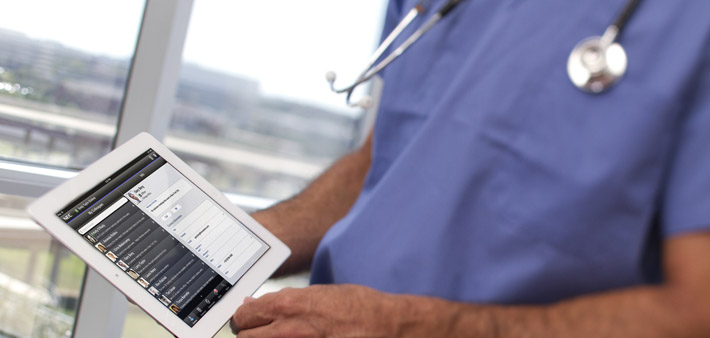
Medical personnel are arguably required to embrace new and emerging technologies far more often, and more readily, than many other professionals. Since the Renaissance, scientific and technological advances have been defining characteristics of medicine. From constantly evolving best practices; to advances in techniques, procedures, devices and pharmaceuticals — medicine is relentlessly evolving, and ideally, improving.
Of course, not every new thing that comes down the pike earns a rightful place in the realm of standard operating procedures and best practices. For many physicians, the challenge comes down to winnowing the proverbial chaff from the grain. Which new technologies, for example, meet two simple criteria: 1) Does it enhance the doctor/patient relationship? 2) Does it enhance health outcomes?
Several categories of new and emerging technologies appear poised to influence — or even transform — the ways in which doctors, medical support staff and patients interact. Here are some emerging trends that may shape the brave new landscape of the doctor/patient relationship in the early 21st century.
Engagement Technologies
There’s no denying that smartphones are changing the way we interact with one another, as well as share and receive information, on a day-to-day — if not moment-to-moment — basis. Rapid sharing of images, data, information and ideas is a fact of modern life. The velocity of these exchanges is both encouraging — and facilitating — ever-faster forms of information sharing and communication. The rise of rapid broadband access has made all of this data-intensive sharing possible.
This is arguably promoting a culture of expectation: People increasingly expect to conduct exchanges, and to receive information, rapidly — if not instantly. That also extends to the doctor/patient relationship. Patients increasingly express a desire for better access to — and more rapid, direct, responsive communication with — their physicians.
Today’s health care system continues to invest heavily in secure electronic medical records (EMRs) technology. This transition appears more or less inevitable. Yet there’s a growing threat that we may lose something important during this historic transition to a more data- and statistics-driven, outcome-based model of health care delivery. It would be a mistake, for example, to lose sight of the involved, intimate, personal, human interaction that has always been at the heart of the doctor/patient relationship.
Surely, aspects of the doctor/patient relationship that emphasize shared decision-making should be preserved if we are to retain our focus on better health outcomes. Of course, informed decision-making often involves educating one’s patients.
Technologies to Enhance Education and Facilitate Informed Consent
Fortunately, there are some new and emerging technologies that can help with everything from patient and medical student education to physician training, not to mention enhancement of doctor/patient communication — and relationships. Examples include the use of sophisticated 3D medical animations to enhance patient education; health outcome improvements through “gamification” to enhance patient engagement; and implementation of automated communication systems, which take advantage of digital technology to connect with patients’ mobile devices to fulfill otherwise labor-intensive tasks, such as delivering patient reminders, conducting scheduling, accepting cancellations; or allowing for rescheduling, approving refills, etc.
Another new technology that is already improving certain aspects of health care delivery is virtual reality (VR) and augmented-reality technology. These nascent technologies are being used for tasks as diverse as preparing surgeons for complex, patient-specific surgical procedures, to teaching the intricacies of molecular biology to medical students. The use of these technologies to rapidly convey medical device marketing information, or to explain the mechanism of action of a new active pharmaceutical ingredient, for example, seems like a logical, natural extension of this cutting-edge technology.
Doctors are increasingly likely to graduate from teaching institutions where they received at least some training involving 3D simulations, augmented reality or fully immersive virtual reality (VR) training environments. VR is an obvious boon to the teaching of subjects as diverse as gross anatomy, cellular biology, microbiology, surgical techniques, endoscopy and more. For example, a “telementoring” system was described recently in the journal “Surgery.”
The system allows experienced surgeons to provide instruction to inexperienced trainees who virtually “observe and assist” the mentoring doctor during actual surgical procedures.
Given these present-day examples of the use of VR in the real world, it’s easy to envision a future in which doctors are able to interact with their patients through virtual telepresence, educate their patients with brief VR presentations, and receive new marketing information conveniently and rapidly.
Author Bio:
Nic Widerhold is the owner of 3D medical animation studio, Ghost Productions. Nic and his team of professionals focus on creating custom medical animations and illustrations to help explain a wide range of medical procedures and devices.
